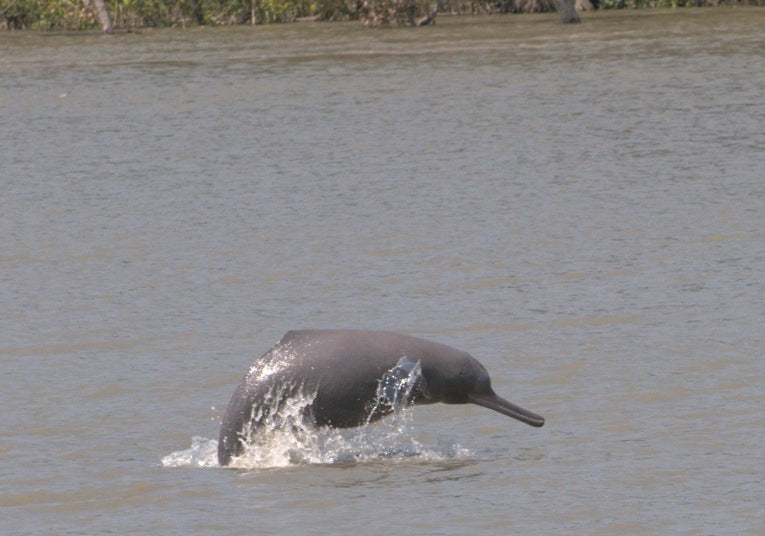Three new official wildlife sanctuaries in Bangladesh will help protect endangered freshwater dolphins, says a top wildlife group. The protected areas in the giant Sundarbans mangrove forest have been specially created to benefit rare Irrawaddy dolphins and Ganges River dolphins.
The move by the Bangladeshi government has come about after the sites - in one of the world's largest mangrove forests - were initially identified by the Wildlife Conservation Society (WCS).
Director of the WCS's Asian Freshwater and Coastal Cetacean Programme, Brian D. Smith, says, "Declaration of these Wildlife Sanctuaries is an essential first step in protecting Ganges River and Irrawaddy dolphins in Bangladesh.
"As biological indicators of ecosystem-level impacts, freshwater dolphins can inform adaptive human-wildlife management to cope with climate change suggesting a broader potential for conservation and sustainable development."
Conservator of Forests, for the Forest Department, in Bangladesh, Dr. Tapan Kumar Dey, says it is critical that they get support from local communities. "The wildlife sanctuaries will be used as a natural laboratory for developing management practices that balance wildlife conservation with the resource demands of a large and growing human population."
Ganges River and Irrawaddy dolphins are Asia's only freshwater species. They have vanished from large areas of their habitat and no one knows exactly how many are left.
However, the good news is that they are well established in the Sundarbans and it is hoped the sanctuaries, which cover 10.7square kilometers (4.1 square miles) of waterways, will help them build up their populations.
The areas were identified in a study by the Bangladeshi Forest Department and WCS, which found the freshwater dolphins were located in areas of intense human activity. The findings were published two years ago in the journal Oryx. Brian D. Smith was the main author.
The freshwater dolphins face several threats. They can become trapped and die in fishing equipment, a large part of their food supply is caught in fine nets used by shrimp farmers and rising sea levels and changes in the river flow, can lead to increases in sediment and salt levels.
The designation is particularly welcome as the Yangtze River dolphin, in China, which faced similar threats, is feared to be extinct, as it was last seen 10 years ago.
Freshwater dolphins are especially vulnerable because there is so much human encroachment on their habitats. As well as protecting the dolphins, the sanctuaries will protect other endangered creatures, such as the small-clawed otter, masked finfoot and river terrapin.
Bangladesh is acknowledged as a vital home for dolphins, porpoises and whales, collectively called cetaceans and in 2009, the WCS discovered around 6,000 Irrawaddy dolphins there, which is believed to be the largest single grouping in the world.
From 18 February, WCS is taking a floating exhibition about dolphins, called "Shushuk Mela" to locals living on the edge of the Sundarbans mangrove forest. The aim of the display, which will last a month and is part of the WCS Bangladesh Cetacean Diversity Project, is to promote the new sanctuaries and open discussions with fishermen and other locals about how to live in harmony with the dolphins.
The WCS exists to help save wildlife and wild places across the globe. It uses science, conservation methods, education and the management of urban parks to take action and help change attitudes.










